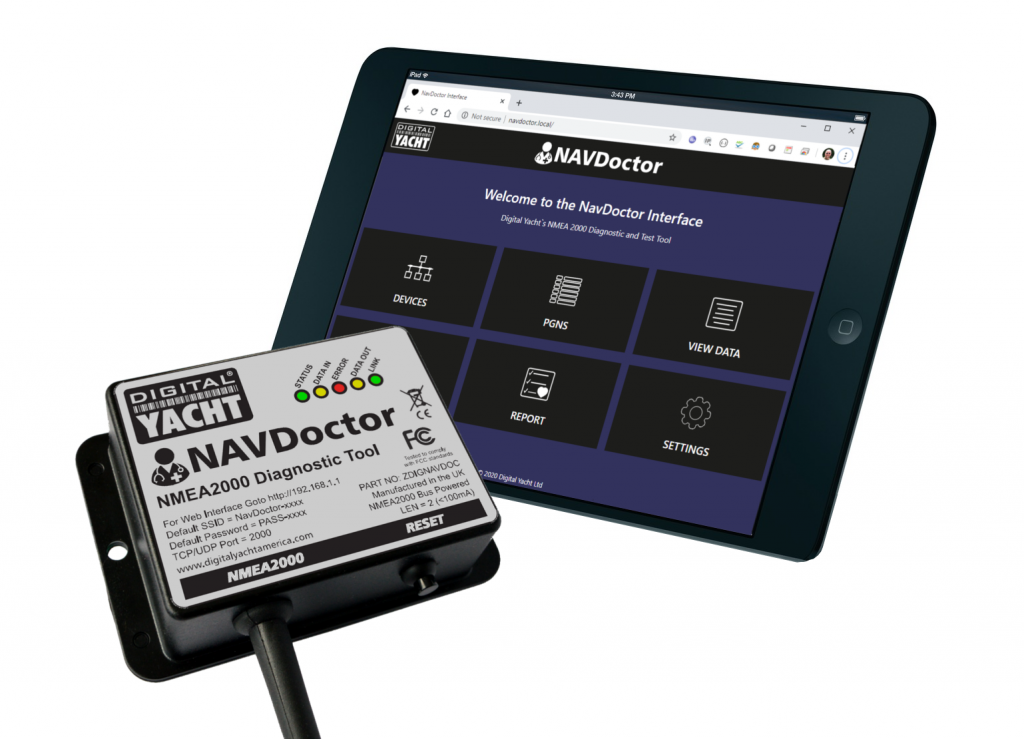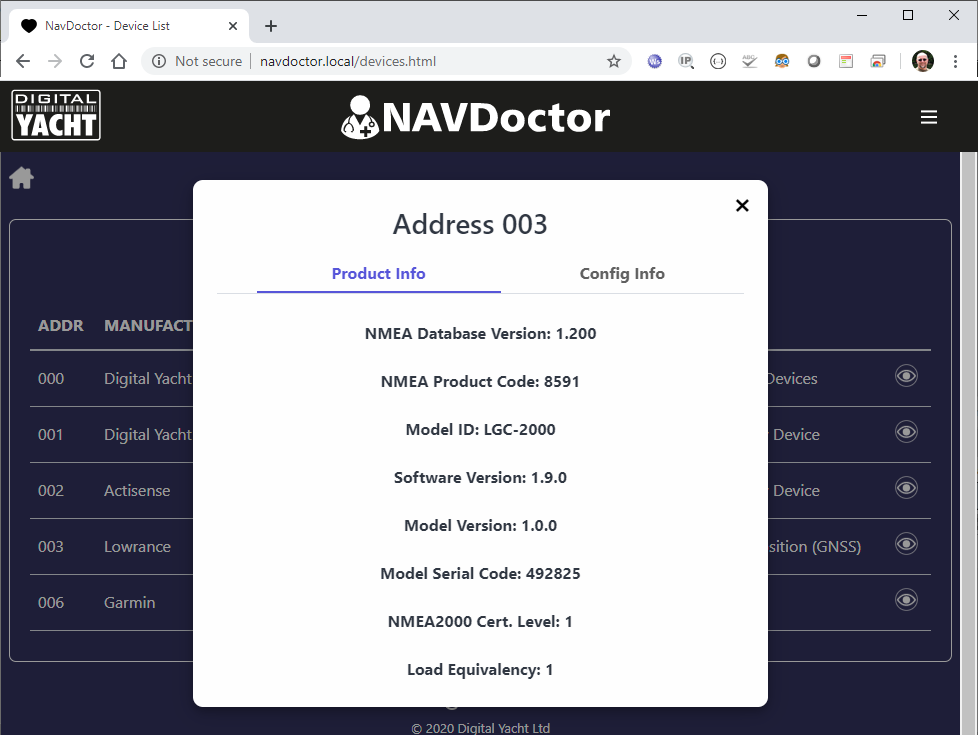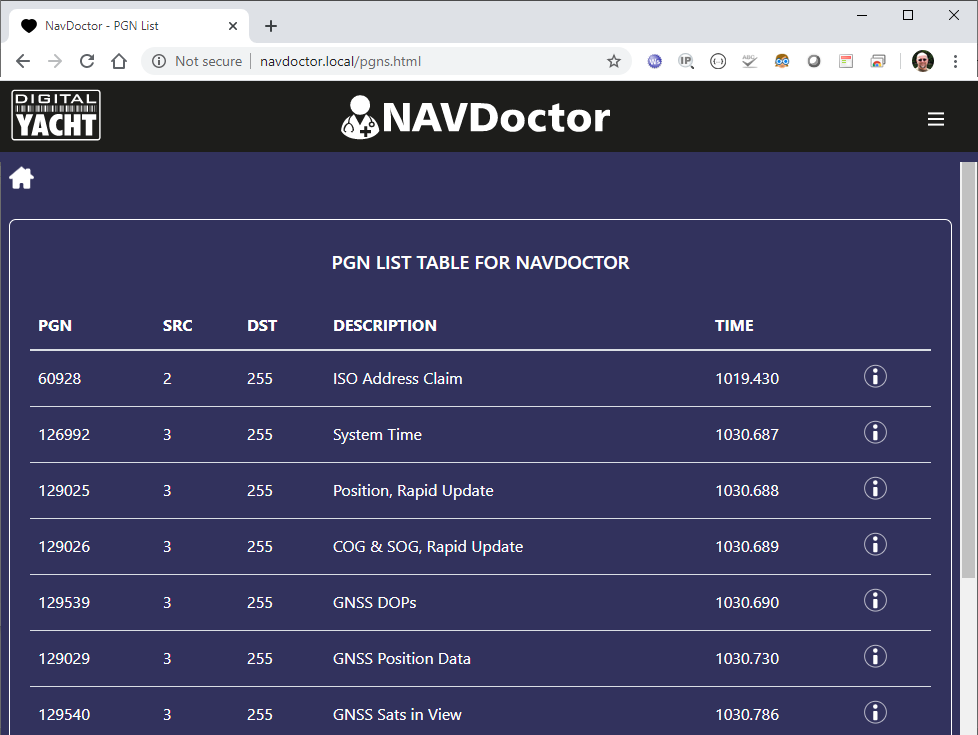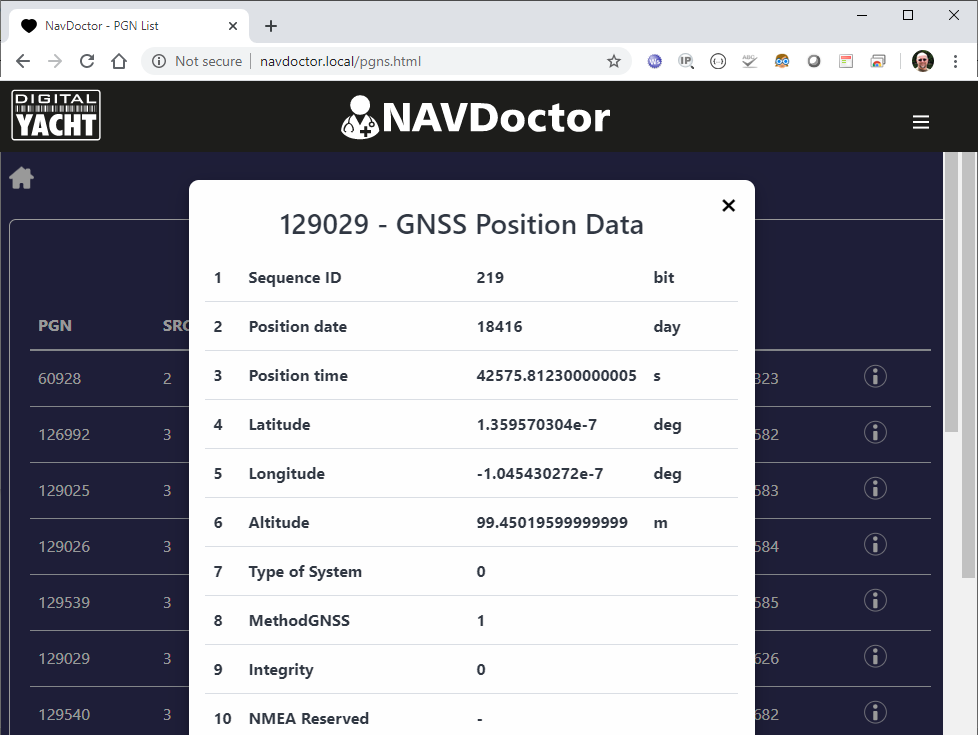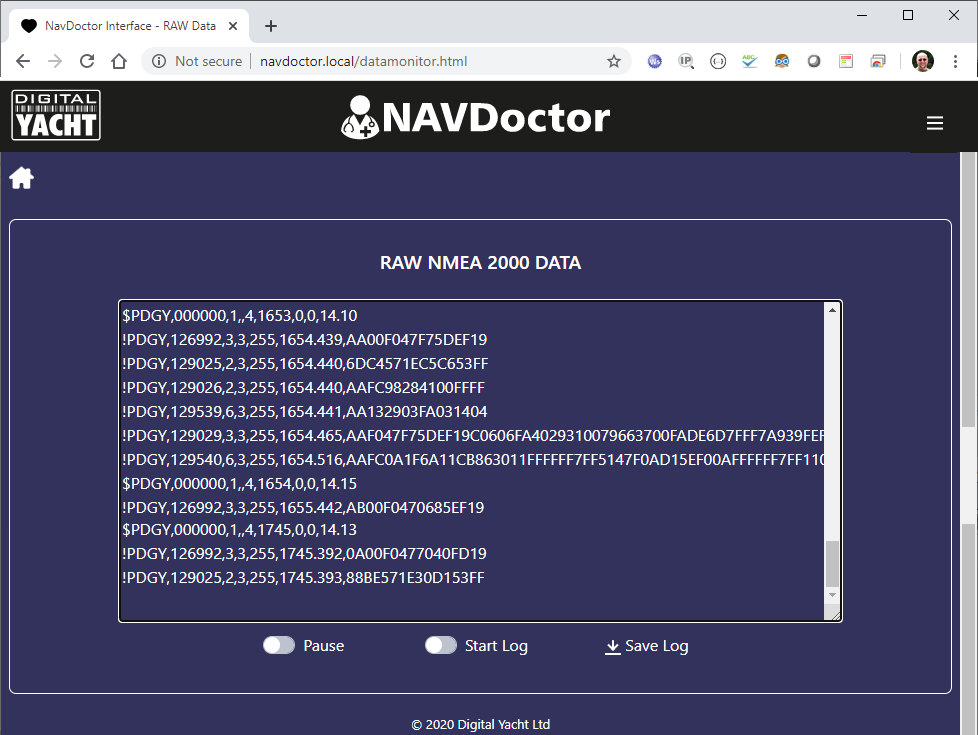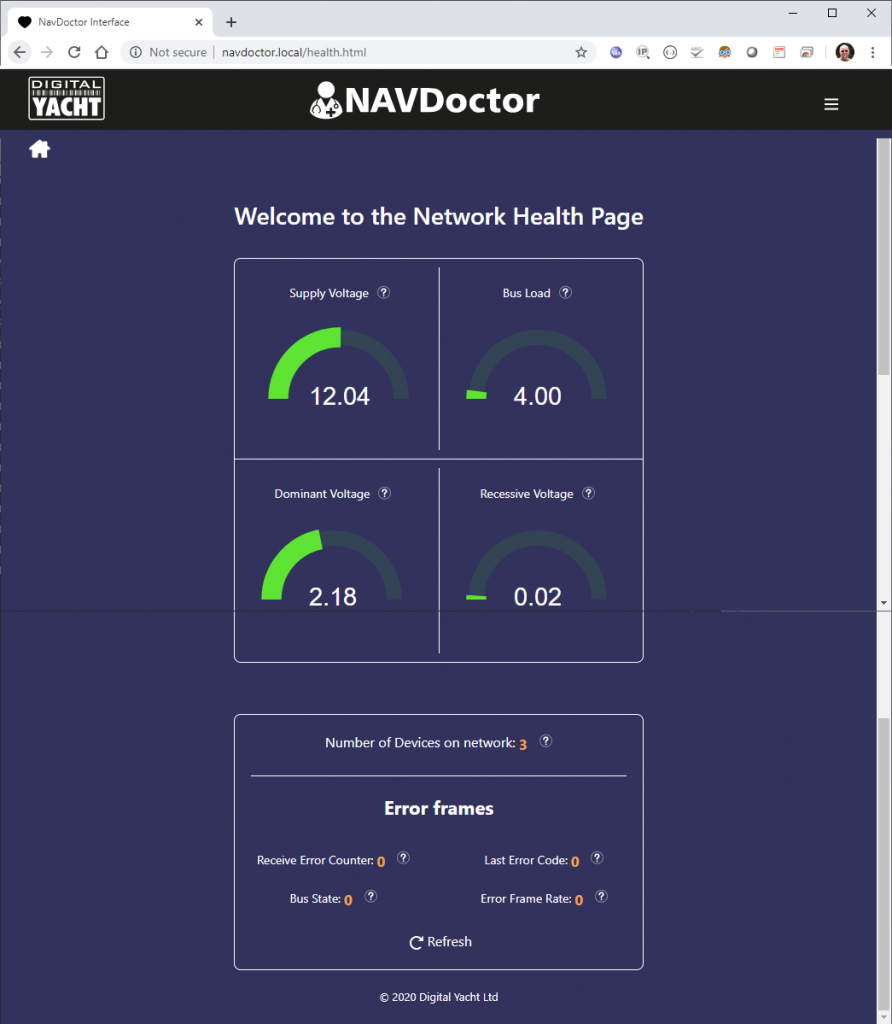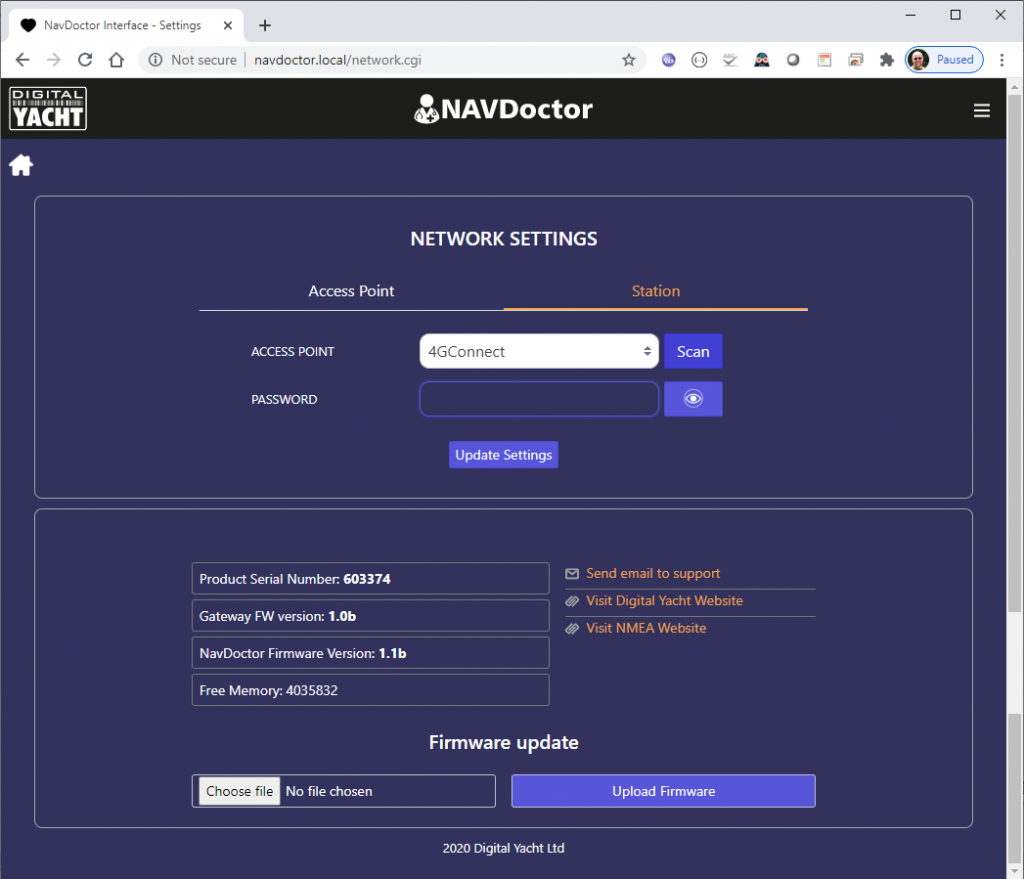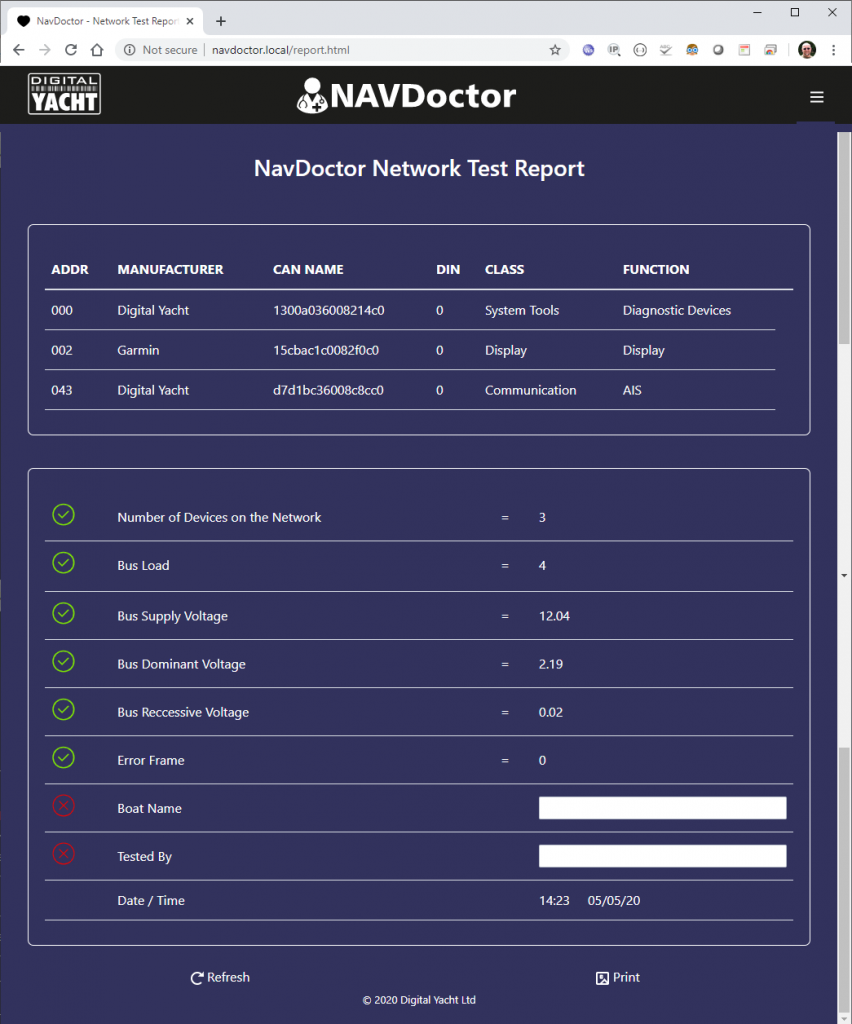NMEA 2000 has become the defacto standard for marine electronic interfacing on board boats. Based on CanBus technology, it’s robust and relies on a backbone with spurred connections to each individual device. In theory, it makes interfacing between brands, for instance a Raymarine plotter connected to a Digital Yacht AIS and a Garmin autopilot, a simple plug ‘n play solution which allows you to choose the best products, value and features for your installation.
In 99% of cases that’s the case but occasionally there’s a rogue device or connection that can cause havoc in the network and waste hours in trouble shooting. That’s where Digital Yacht’s NAVDoctor comes in – a first in NMEA 2000 diagnostics, monitoring and fault finding both at the data and physical levels
NAVDoctor just “T’s” into the NMEA 2000 network. It’s self powered from this connection too so installation takes seconds. It then creates a secure, password protected wifi point. Search for this on any mobile device like phone, tablet, iPad or PC and connect. Then open the browser and enter the IP address of NavDoctor and your presented with its easy to use interface – no complicated software to load!
Devices on the NMEA 2000 network
Selecting DEVICES brings up a detailed list of devices on the network with address, manufacturer and function information.
You can then drill down further by clicking on the “eye” icon. It gives you an indication of what PGNs and functionality a device supports i.e. if it says V1.3 and Entertainment PGNs came in at V1.5 for instance. It’s also important to find out the Model Number and Firmware of the device as there might be a known software bug at V2.3 but it is fixed with V2.4. You can also find out if the device is NMEA 2000 certified.
PGN (Parameter Group Number)
The PGN function shows a list of PGNs (the data on the network) with the source and also drill down information to reveal the actual data encapsulated in the PGN – useful if your traditional display can’t show or display a particular field value and ideal for monitoring proprietary PGNs
By clicking on the information icon, you will get more technical information about a specific PGN.
View Data on the NMEA 2000 network
VIEW DATA displays a scrolling list of data on the bus. This can be logged as a simple text file which can be invaluable for data analysis or post processing of data for scientific or logging applications
Health of the NMEA 2000 network
It’s also important that the network can be checked at the physical level as excessive volt drops or incorrect terminations cause unreliability in terms of frame errors. Non compliant devices can also cause issues so it’s easy to locate a source issue. The HEALTH function brings up a display of recessive and dominant voltages, bus load and frame errors to provide analysis at the physical level.
NavDoctor’s Settings
The SETTINGS page allows you to change the SSID and wifi password but you can also configure NavDoctor to join another wifi network which maybe useful in an office or service facility environment so existing wifi network users can also view the data. As new firmware updates become available, they can easily be installed through this interface too. Updates such as manufacturer codes, devices etc are regularily updated from the NMEA Organisation master database and posted on our GitHub site
NMEA2000 Network Report
The REPORT function provides a useful summary of all the NMEA 2000 interconnected devices and current system status which can be printed. It’s useful for insurance purposes for end users as well as validation of a professional installation.
So that’s NAVDoctor at a glance. You can order online at any of our websites and there’s more information HERE.
Finally, there’s a detailed 40 minue video walk through here on NMEA 2000 and NAVDoctor from our CTO Paul Sumpner





